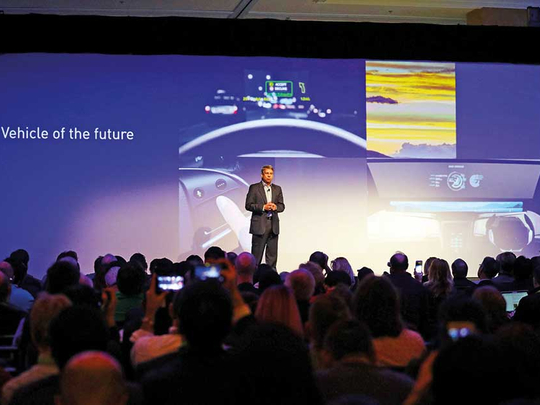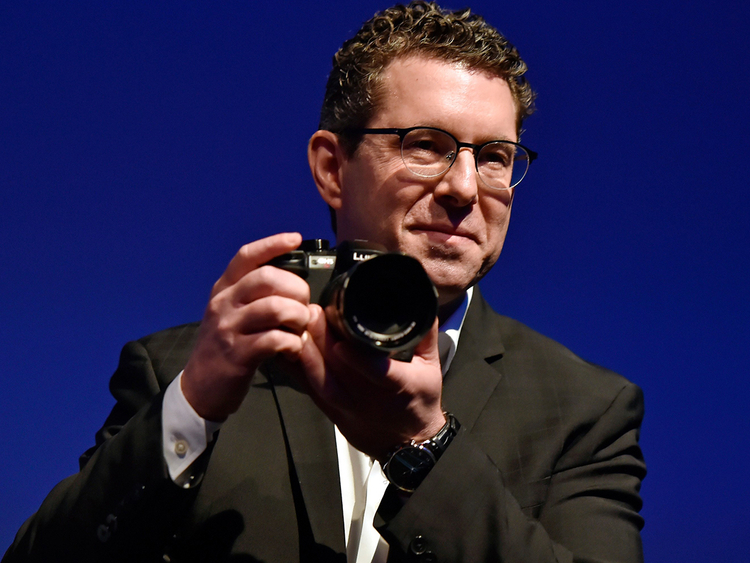
Las Vegas: Following a subdued 2017 at CES, the largest consumer electronics event in the world, Panasonic was back with a bang as this year’s show kicked in to gear on Monday morning.
The Japanese giant announced a raft of new consumer products, including two new 4K HDR OLED televisions, two automobile assistant systems (one with Google integration and another with Amazon), a smart speaker, a new 4K camera, and a remote home monitoring system.
Panasonic seemed to sit firmly on the fence over a debate expected to define CES 2018: Which brands would partner with Amazon to use its Alexa platform, and which would partner with Google to use its Google Assistant system.
Instead of picking a side, Panasonic announced that it was in fact collaborating with both Google and Amazon, and had developed in-car infotainment systems to work with both of the companies’ personal assistant platforms.
That was not all, however.
The manufacturer also announced a number of government collaborations and business to busi-ness initiatives, including a new on-board WiFi system for airlines, new solar cells and electric car batteries, and other technologies in aviation, urban planning, and supply chain management.
Making many of these announcements was Tom Gebhardt, chairman and chief executive of Panasonic North America, who was joined on stage at times by senior vice president for Amazon Alexa Tom Taylor, the head of Panasonic’s consumer electronics division Michael Moskowitz, and Gene Karshenboym, head of partner engineering at Google.
In keeping with the subject of CES, it was Moskowitz who unveiled the bulk of new products, running through a long list of Panasonic’s latest new consumer gadgets, set to hit the market this year.
The most eagerly anticipated of these was the company’s new ultra-high definition OLED TVs: The FZ800 and FZ950 series come in 55 inch and 65 inch sizes, which Panasonic touted as “bringing Hollywood to your home.”
Telling attendees at its press conference on Monday morning that the TVs were being used by a number of major post-production film studios, Panasonic said that the new models would sup-port HDR 10+ dynamic metadata technology, offering the new industry standard in picture quality.
Next up was the Panasonic GA10 Smart Speaker, which uses Google’s voice assistance software, and Google Play and YouTube built-in.
“Our team is working hard to find ways to integrate these types of smart technologies in to all of our products,” Moskowitz told the audience.
In another major leap for the company’s camera offering, Moskowitz also announced the new Lumix GH5S, which allows users to record in true Cinema 4K (4096 x 2160) at 60 fps, a feat that Panasonic says is a first for a mirrorless camera.
Also announced in the consumer electronics segment was the new HomeHawk remote home monitoring system, offering full-colour night vision viewing, and a new turntable system, which it said is aimed at millennials looking to recapture the sound of the past.
Meanwhile on the corporate front, Panasonic chief executive Gebhardt said that US airlines Southwest and United would begin installing Panasonic’s new in-flight WiFi system, offering 20 times greater bandwidth, this quarter.
The new on-board wireless internet system would allow flyers to access services such as Skype and live video streaming, a first in aviation.
Amid an eventful press conference, however, it is Panasonic’s collaboration with giants Amazon and Google that is most likely to grab the headlines.
Amazon initially rolled out Alexa Onboard, a new service that is all part of Amazon’s drive to ensure Alexa, its personal assistant, is featured everywhere, from home to car.
“There’s no question that for a long time, the consumer wanted a really seamless integrated voice solution in the vehicle,” Gebhardt said.
In a statement, Gebhardt added: “Enabling some of these capabilities even without an Internet connection is revolutionary.”
Towards the end of the press event, Gebhardt unveiled Panasonic’s collaboration with Google, too, offering many of the same features as its Amazon system.













